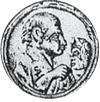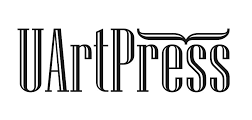Művészetoktatás a tudás és létezés határán
Keywords:
art educationAbstract
Art Education on the Border of Knowledge and Existence
The situation, opportunities and difficulties of teachers teaching arts in Transylvania are of concern, as we train prospective music, visual arts, dance and drama teachers at the Teacher Training Institute of the University of Arts in Târgu Mureş and constantly face questions about what will await them in the everyday educational practice. For my present research, I asked 33 art teachers in 2019 how they felt about the importance of the subject they taught, what challenges they faced in their teaching activities, and what advice they would give to their peers, future art teachers.
References
AVVISATI, F., JACOTIN, G., VINCENT-LANCRIN, S. (2013): Educating Higher Education Students for Innovative Economies: What International Data Tell Us, Tuning Journal for Higher Education, 223-240.
COLLINS, A.(2020): Music Education Helps Improve Children's Ability to Learn, https://education.abc.net.au/newsandarticles/blog/-/b/2974240/music-education-helps-improve-children-s-ability-to-learn (2020.05.06)
EUROSTAT, 2015, Distribution of EU Graduates by Field and Sex https://ec.europa.eu/eurostat/web/products-eurostat-news/-/DDN-20170710-1?inheritRedirect=true& (letöltés időpontja: 2019.03.20)
KISS Virág, 2017, Művészetalapú módszerek, in Nagy Ádám (szerk): Szolgálva, nem tündökölve, https://mek.oszk.hu/18600/18644/18644.pdf#page=189 (letöltés időpontja: 2019.11.20)
KODÁLY, Z. (1944): Mire való a zenei önképzőkör? In: Kodály Zoltán (1982). Visszatekintés I. Ed. Bónis, F., Budapest: Zeneműkiadó, 154–157.
MURFEE, E. (1993): The Value of the Arts, President’s Committee on the Arts and the Humanities, National Endowment for the Arts, Washington DC.
POPRÁDI Kissné Enikő, FEKETE Bencéné Andrea, 2014, A zenei nevelés helye és szerepe az oktatásban az alapfokú művészetoktatásra fókuszálva, Acta Scientiarum Socialium, 41, 51–66, https://journal.ke.hu/index.php/asc/article/
view/337 (letöltés időpontja: 2021.03.20)
SOLSO, R. (2001): Brain Activities in a Skilled versus a Novice Artist: An fMRI Study, Leonardo Journal, 2001/02/01, Vol. 34, 31-34.
TYLER, C., LIKOVA, L. (2012): The Role of the Visual Arts in Enhancing the Learning Process, Frontiers in Human Neuroscience, 2012/02/08
UZSALY Bence András, 2o16, Haáz Sándor zenetanár, https://mmakademia.hu/mobil-munkassag/-/record/MMA27095 (látogatás dátuma 2020. 11.12)
VARGANCSIK-THÖRIK Krisztina Iringó, 2021, Művészeti oktatás az erdélyi iskolákban a tanulók szemszögéből, Pedacta, 2021/1 (megjelenés folyamatban)
VAUGHN, K.,WINNER, E. (2000): SAT scores of students with four years of arts: what we can and cannot conclude about the association, Journal of Aesthetic Education, Vol. 34/3-4, 77-89.
WINNER, E., GOLDSTEIN, T. and VINCENT-LANCRIN, S. (2013): Art for Art's Sake? The Impact of Arts Education, Educational Research and Innovation, OECD Publishing. http://dx.doi.org/10.1787/9789264180789-en (2019.05.10).
Downloads
Published
How to Cite
Issue
Section
License

This work is licensed under a Creative Commons Attribution 4.0 International License.
CC-BY permits any use, reproduction, distribution, self-archiving and citation of the work as long as the authors are credited. The complete bibliographical data of Symbolon Journal must also be indicated, which you can find in the How to cite section on this page. If possible, please also place a link leading to the original publication.
Copyright of the paper belongs to the author(s).




